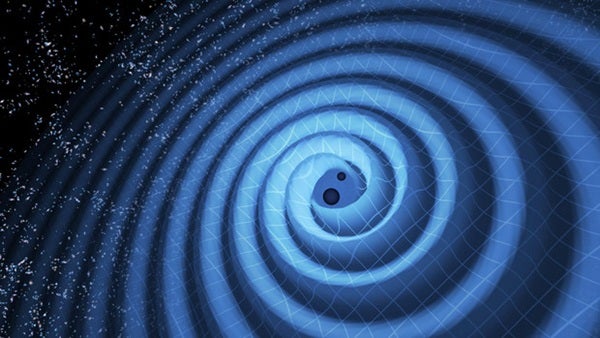Gravitational waves are generated any time mass accelerates, spreading out like ripples on a pond. Because the size of the waves generated is proportional to the amount of mass accelerated, it’s easiest to see the waves resulting from some of the most intriguing astronomical events imaginable — the merger between two compact massive objects, such as neutron stars or black holes. The Albert Einstein Institute (AEI) at the Max Planck Institute for Gravitational Physics in Potsdam, Germany, has recently gained a powerful tool in the ongoing effort to detect and understand gravitational waves: the Minerva supercomputer.
Gravitational wave science requires more computing power than your average desktop. Performing the complex and lengthy calculations required to numerically solve Einstein’s field equations, which describe the behavior of mass and gravity based on general relativity, requires massive supercomputers. Minerva brings a major boost in computing power to the table, able to perform these calculations much more quickly than the AEI’s previous equipment.
“The simulation of the first gravitational wave measured by LIGO lasted three weeks – on our previous supercomputer Datura,” AEI director Professor Alessandra Buonanno explained, in a press release announcing that Minerva has been brought online and put to work. “Minerva is significantly faster and so we can now react even quicker to new detections and can calculate more signals.”
Minerva’s 594 compute nodes each contain 2x 8-core Intel Xeon processors and 64 GB DDR4 RAM. This adds up to a total of 9,504 CPU cores in Minerva’s 500 TB BeeGFS parallel file system. Overall, Minerva boasts a peak performance of 302.4 teraflops. One teraflop represents one trillion floating-point operations each second. These specs make Minerva more than 6 times as powerful as its predecessor when it comes to solving the complex equations and models associated with gravitational wave detection and characterization.
Gravitational radiation can be likened to electromagnetic radiation in many ways. Just as particles emit light of varying wavelengths, which is observed by astronomers here on Earth, the motion of particles can emit gravitational radiation, which is also detectable here on Earth. However, unlike electromagnetic radiation, gravitational radiation is more akin to sound waves — its wavelength is very long and can’t be used to form a traditional “picture” of its source. But they do tell us about the dynamics of the system that emits them. Such systems are typically binary systems containing compact objects, such as black holes or neutron stars, that are spiraling inward toward an inevitable merger. During this process, the objects emit gravity waves as energy is lost and they grow ever closer together.
Detecting gravitational waves is difficult, particularly because their signal is small and can easily become buried beneath the background noise of the universe, or even human and natural activities here on Earth. By calculating the types of gravitational waveforms that could possibly result from different merging binary systems with varying characteristics, scientists are able to examine the data from gravitational wave observatories to search for the real signals hidden amidst the noise. The faster calculations and solutions achievable with Minerva’s greater computing power directly translate into the ability to more quickly and thoroughly search the data for new gravitational wave detections.
Minerva comes online at a particularly important time, when two of the world’s gravitational detectors (Advanced LIGO in the USA, or aLIGO, and GEO600 in Germany) have recently entered O2, their second observational run. O2 will have even greater sensitivity than O1; aLIGO and GEO600 should be able to detect gravitational waves at a distance 20% greater than before, increasing the detectable event rate by 70%.
Not only will new observations of gravitational waves help astronomers to better understand the systems and events that create them, such detections will also offer ever-more-precise tests of Einstein’s theory of general relativity.










